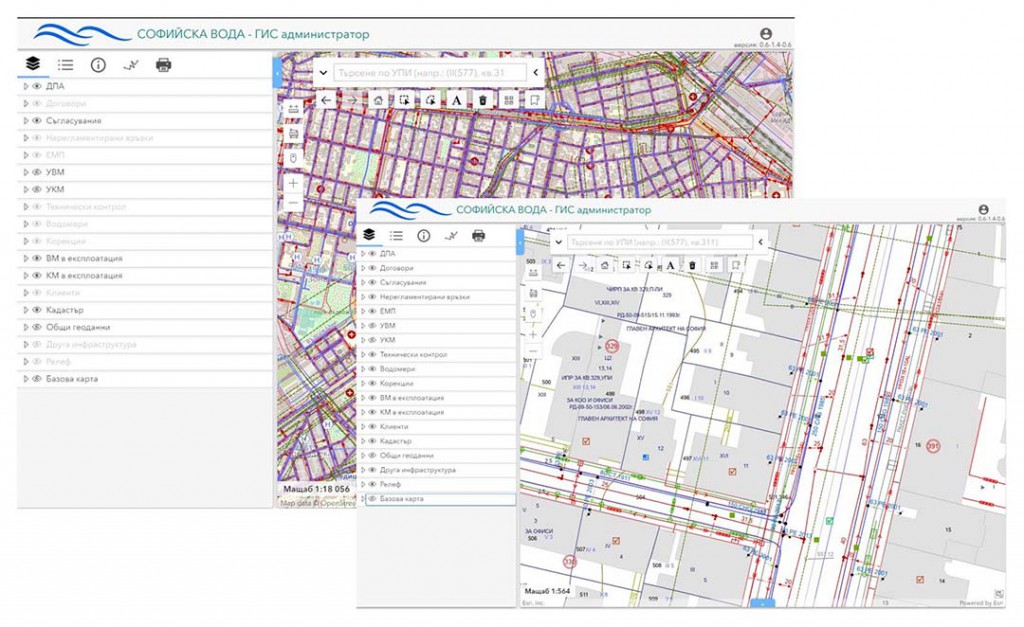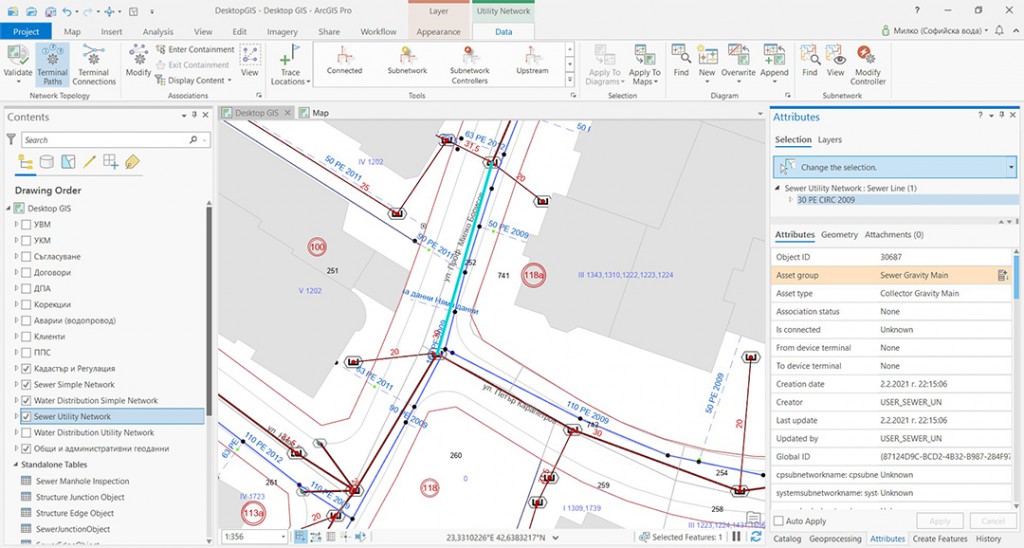The implemented solution helps Sofiyska voda work faster and smarter and provides services of higher quality to residents.
“The implementation of ArcGIS Utility Network allows us to even better manage our physical assets as well as to take full advantage of the ArcGIS technologies that are solving current problems with a vision for the future.”
Milko Velichkov, Head of Asset Management; Sofiyska voda, Part of Veolia
Background
Sofiyska voda implemented its enterprise-wide geographic information system (GIS) about 10 years ago based on the state-of-the-art Esri technology at that time, with service-oriented architecture and many desktop and web applications. The system covered a wide range of processes in the organization—from network planning and design to maintenance, call center, and others. Meanwhile, the Sofiyska voda GIS team and management staff gained deep expertise in managing the geodatabase and specifics of GIS, becoming thought leaders among the water and sewerage companies in Bulgaria. This legacy workflow worked well, but as the requirements of the organization evolved, staff realized that a more modern solution was needed.
Challenge
Sofiyska voda needed to implement modern solutions that enable staff to meet high standards for IT systems and provide the best service and care for their customers. They also needed the solution to improve network management capabilities while securing next-generation functionality. They identified the best solution to update legacy workflows was Esri’s ArcGIS Utility Network. Sofiyska Voda once again trusted the team of professionals of Esri Bulgaria with proven experience in the implementation of geospatial technologies, which have contributed to the successful implementation of many GIS projects of national importance.

Sofiyska voda, part of Veolia, launched a pilot project for using Esri’s ArcGIS Utility Network with the existing water and sewer GIS data. As a result, Esri Bulgaria provided a report that assessed the current situation and pinpointed steps toward full-scale Utility Network implementation. The integration of the Utility Network with Sofiyska voda’s GIS system was planned in two stages:
Stage 1
This stage consisted of upgrading the existing GIS by implementing and adapting ArcGIS Utility Network, performing data migration, and upgrading the system architecture while maintaining existing functionality.
The following activities were performed:
- Switch from ArcMap to ArcGIS Pro with Esri’s ArcGIS Utility Network.
- Reconfigure and upgrade server software to meet ArcGIS Utility Network deployment requirements.
- Migrate all existing GIS data to the ArcGIS Utility Network data model.
- Migrate existing Silverlight-based Web GIS solution to a JavaScript Web GIS application.
- Training end-users to work with the new solution.
- Configure Esri’s ArcGIS Workflow Manager to work in the new IT and GIS environment.

Stage 2
The second stage of the project is forthcoming, which envisages integration with other IT systems and full implementation of mobile ArcGIS applications, including ArcGIS Field Maps for data collection and ArcGIS Workforce for task allocation.

The upgrade of the existing data model and processes to those enabled by the Utility Network provides many benefits, the most key of which are the following:
- A highly efficient and scalable model designed for infrastructure networks of large organizations including full assets group and assets type definition and codification
- Modeling connectivity of the components in infrastructure networks—water, sewer, and electrical
- Representation of areas with a large number of objects on a map without cluttering or presenting complex objects by generalization, depending on the scale of the map
- Increased data consistency and reduced data entry errors by imposing multiple validation and verification rules, depending on the specifics of the infrastructure network
- Advanced analytical capabilities, including through dynamic network models
- A comprehensive view of the infrastructure network, including through network diagrams generated dynamically
The solution is an integrated part of the Esri ArcGIS system, providing specific opportunities for staff to implement and use modern technological workflows.
The news about the project was published in Esri’s newsletter